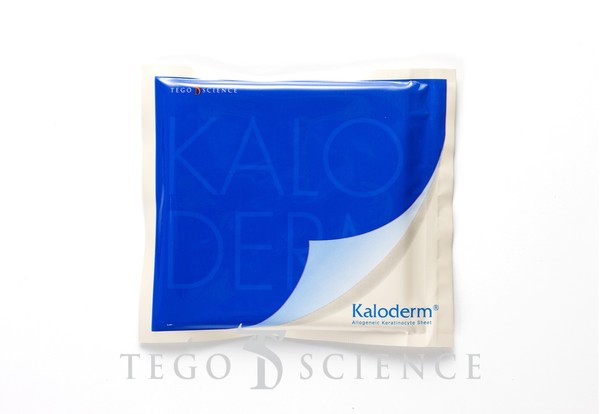Skin bank generally refers to an organization that removes skin from donors, stores it, and reuses it as a graft for patients.
Tego Science, a Korean company that produces cultured epidermis for wound healing, runs the nation’s only cell bank, collecting allogeneic cells from patients and culture to apply on its cell therapies for dressing burns.

Tego Science began operating its master cell bank (MCB) and working cell bank (WCB) with the foreskin of a circumcised infant in 2001. It has continued to develop technology and expand the facility until now.
The company's two flagship products, Kaloderm and Holoderm, use cultured cells from the bank.
Holoderm is Korea's first and the world's second commercialized cultured skin autograft for treating patients with severe degrees of burn. Stem cells are cultured into sheet grafts, which are then transplanted on the patient's wound for regeneration. It is made based on the autologous keratinocytes collected from patients.
Kaloderm is the world's third allogeneic cell therapy product for healing wounds. It is cultured from the master and working cell banks that contain the keratinocytes from the foreskin of a circumcised infant.
"We have the technology to culture cells indefinitely and will continue to make Kaloderm from the single source and maintain the same quality," a company official said.
The allogeneic cell therapy can be mass-produced regularly and stored frozen at minus 60 degrees Celsius for two years. The sheeted graft promotes healing of severely burned wounds, unlike Holoderm that regenerates the affected area.
The company said that it stores the cells and cell lines for up to 10 years. The company stressed that it has the technology to keep them alive much longer but limited the storage period to 10 years due to space and storage costs.
Autologous cell therapy products are therapeutic agents that isolate and cultivate cells from the patient's tissue and transplant them into the patient. It can only be used on the same person as it would not show therapeutic effect for other people.
As autologous cell therapy dies quickly over time, most of them survive only up to 48 hours. All quality tests cannot be completed before shipment.
Different from autologous cell therapy products, allogeneic cell treatments use other people's cells, requiring a higher level of technology and regulation.
Most allogeneic cell therapy products expect to show peripheral secretion rather than engraftment, and they are also referred to as a protein composition. The stability of the protein composition may be influenced by storage conditions, excipients, or biomaterials.
Currently, the Ministry of Food and Drug Safety stops at recommending the operation of cell banks. However, according to Tego Science, the operation of cell banks must be compulsory because of inter-individual donor variability.
"We have been operating the only allogeneic cell bank in Korea that meets global certification standards," the company official said. "We are the only company that can make allogenic cell therapies from the cell stored in the master cell bank and working cell bank collected from a single donor."

